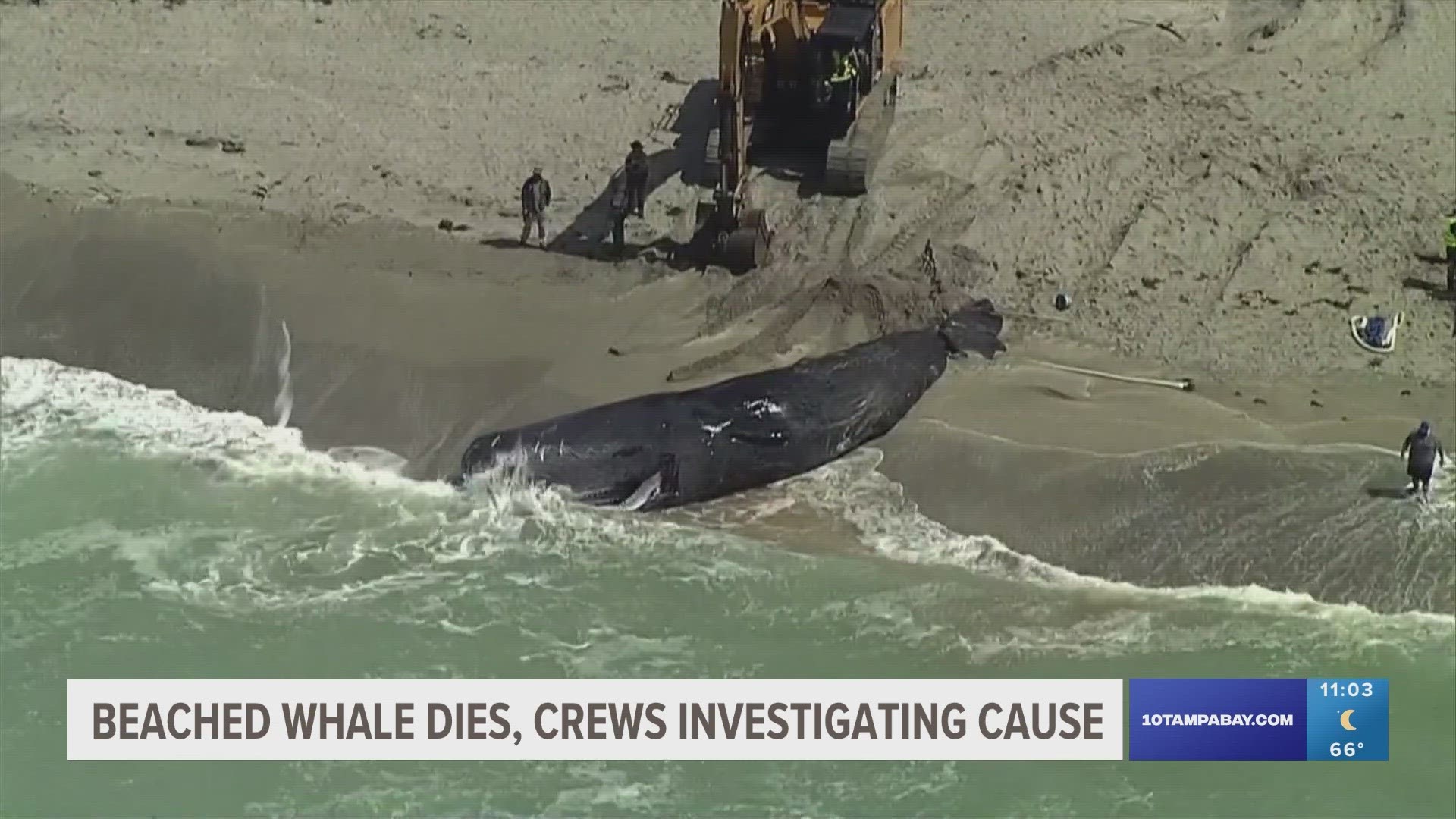VENICE, Fla. —
For the first time in 16 years, a sperm whale was found stranded on the Gulf of Mexico’s coastline in Venice.
The 44-foot-long, roughly 60,000-pound animal was spotted on Sunday, stuck in sand along the shoreline. Wildlife officials confirmed the next day it had died.
The rare event, known as a "beaching," has drawn national attention as researchers work to figure out why the whale washed ashore.
But what do we know about the phenomenon, and how does that apply to sperm whales?
Cetacean Stranding aka ‘beaching’
Beachings are not specific to a certain kind of marine animal, according to the nonprofit organization the Fish and Wildlife Foundation of Florida (FWFF). There’s not one single cause for beachings, and they don’t happen in just one specific place.
Of the many reasons a whale, shark or dolphin may become beached, one of the most common is injury or illness. The National Oceanic and Atmospheric Administration (NOAA) has noted that if a whale is weak, it may drift in the ocean toward shallow water without realizing it before becoming stranded.
Illness and injury mean anything from parasitic infections to boat strikes to starvation.
Marine mammals and bigger fish can become emaciated if they consume debris, like litter or part of a fishing net, according to FWFF. In 2022, a 47-foot sperm whale beached itself off the coast of the Florida Keys. Researchers from the Florida Fish and Wildlife Conversation Commission performed a necropsy and found a mass of intertwined fishing line, pieces of netting and a plastic bag-type material, which they determined was preventing the whale from being able to eat properly.
Navigation issues can also make a whale vulnerable to beaching. All whales use sound to navigate their surroundings, whether it’s through echolocation or a series of sounds that are usually called ‘whale songs’ (think that scene from Finding Nemo where Dory tries to call out to a blue whale). Man-made sounds, like what’s produced from oil drilling or military submarine exercises, can disorient a whale by interfering with the sound it sends out to get around, according to FWFF.
Bad weather can also disrupt a whale’s navigation abilities.
What about sperm whales?
Laura Engleby, Chief of NOAA's Southeast Marine Mammal Branch, said the sperm whale that was found beached in Venice was an adult male, 44 feet long and an estimated 35 tons. She noted the whale was also emaciated.
“It’s a rare event,” she said. “Obviously, this whale wasn’t feeling very well and wasn’t doing very well to be this close to shore and in this kind of condition.”
The sperm whale’s NOAA Fisheries profile describes the species as “the largest of the toothed whales,” so the mammals live and hunt in the deep ocean. It’s rare they end up in the shallow parts of the Gulf of Mexico along Florida’s west coast. The last time a sperm whale was beached along the Gulf coast was in 2008 in Texas, Engleby said.
According to FWC, sperm whales are endangered and protected under the Federal Endangered Species Act and Florida’s Endangered and Threatened Species Rule.
What’s next?
Wildlife officials said the necropsy of the adult sperm whale could last all of Monday. The cause of death could become clear as that process progresses throughout the day, or researchers may have to send samples to a lab for further analysis which could take months, according to Engleby.
An initial examination of the whale found no markings that could be attributed to some exterior cause of death, like a boat strike, officials said.
While the death of the rare sperm whale is tragic, Engleby said the research that comes out of the investigation will help scientists better understand the rare phenomenon of "beachings."
Editors Note: The video below shows scientists beginning the necropsy of the beached whale, and may be graphic to some viewers.

